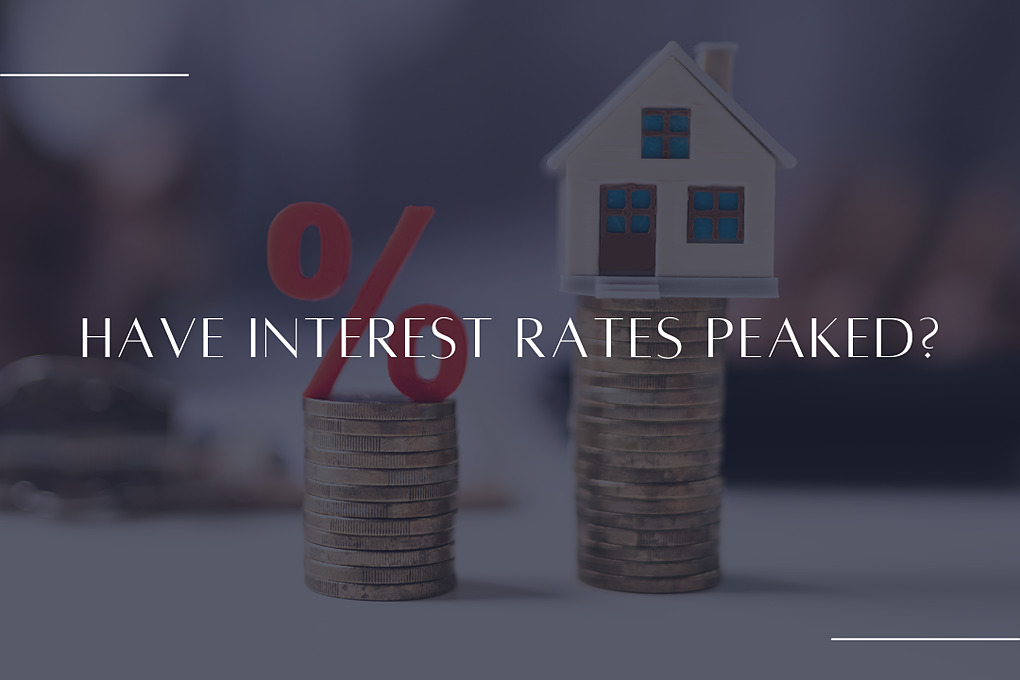Have interest rates peaked?

- Oct 23rd 2023
The recent decision to maintain the Bank of England's base interest rate at 5.25% has brought a halt to a string of 14 consecutive rate increases that began back in December 2021. With better-than-expected inflation figures, revealing a slowdown to 6.7% in August, the Monetary Policy Committee (MPC) was faced with a divided house on whether to pause this monetary tightening.
A Tug of War Over Rates
The majority ruled, with a 5-4 split in favour of holding the base rate steady at 5.25%. Four members preferred a 0.25 percentage point increase, setting it at 5.5%. The decision is seen as a reflection of uncertainty in the economic landscape, with inflation rates being a focal point.
GDP figures released recently suggest that interest rates will remain unchanged in the upcoming month. The UK economy showed growth of 0.2% in August, but there are also contrasting indicators.
A Closer Look at Inflation
Inflation, as a key driver of interest rates, has garnered considerable attention in recent times. The Consumer Prices Index (CPI) has been steadily above the Bank's 2% target, leading to concerns about inflation-driven economic downturns. However, a promising trend emerges as inflation seems to be slowing down.
In August, inflation dropped to 6.7%, down from 6.8% in the previous month. In September, it held steady at 6.7%. As swap markets implied a 50% chance of a rate increase at the November MPC meeting, there's an increased focus on how long rates will stay at current levels rather than how high they might go.
The Peak of Interest Rates?
Consensus is building around the idea that the current interest rate could mark the peak of this rate cycle. Paul Dales, Chief UK Economist at Capital Economics, suggests that "The decision by the Bank of England to leave interest rates unchanged at 5.25% probably means that rates are already at their peak."
Market expectations also align with this viewpoint. Over 70% anticipate the base rate will be held at the next meeting in November. However, those hoping for a swift return to lower rates may be in for disappointment, as rates are expected to remain high for some time.
Anticipating Rate Reduction
While the focus remains on the possibility of lower rates, most analysts project a decline in interest rates to occur next year. Economic forecasting group EY Item Club anticipates that interest rates will drop in the second half of 2024. The strategy is to prolong the stay at the 5.25% peak, then reduce rates further and faster than expected.
Rob Clarry, Investment Strategist at Evelyn Partners, emphasises that markets are currently pricing in only one 25-basis point cut by mid-2024. This aligns with the expectation that the Bank will maintain tight policies as they continue battling inflation.
Upcoming Rate Reviews
The MPC meets eight times a year to deliberate on interest rate adjustments. In its last meeting on September 21, it decided to maintain rates at 5.25%. Two more interest rate announcements are scheduled for this year: November 2 and December 14.
Impact on Mortgages and Savings
Mortgage rates have remained high due to consecutive rate hikes. Nevertheless, some lenders have begun trimming rates over recent months. These reductions accelerated after the Bank held the base rate steady. For example, First Direct reduced rates on its fixed-rate repayment products, while Barclays also made further reductions.
Average rates have started to fall, marking good news for those seeking to remortgage at the end of a fixed-rate deal.
Savings rates have been on the rise. High-interest accounts are offering competitive rates, and the recent efforts of regulators have pressured traditional banks to raise rates. Savers are advised to actively seek the best rates and make account switches as necessary.
In a shifting landscape, being proactive is essential, especially with the possibility of Bank of England rate cuts on the horizon. Deals can change rapidly, so swift action is advisable when attractive rates emerge!








